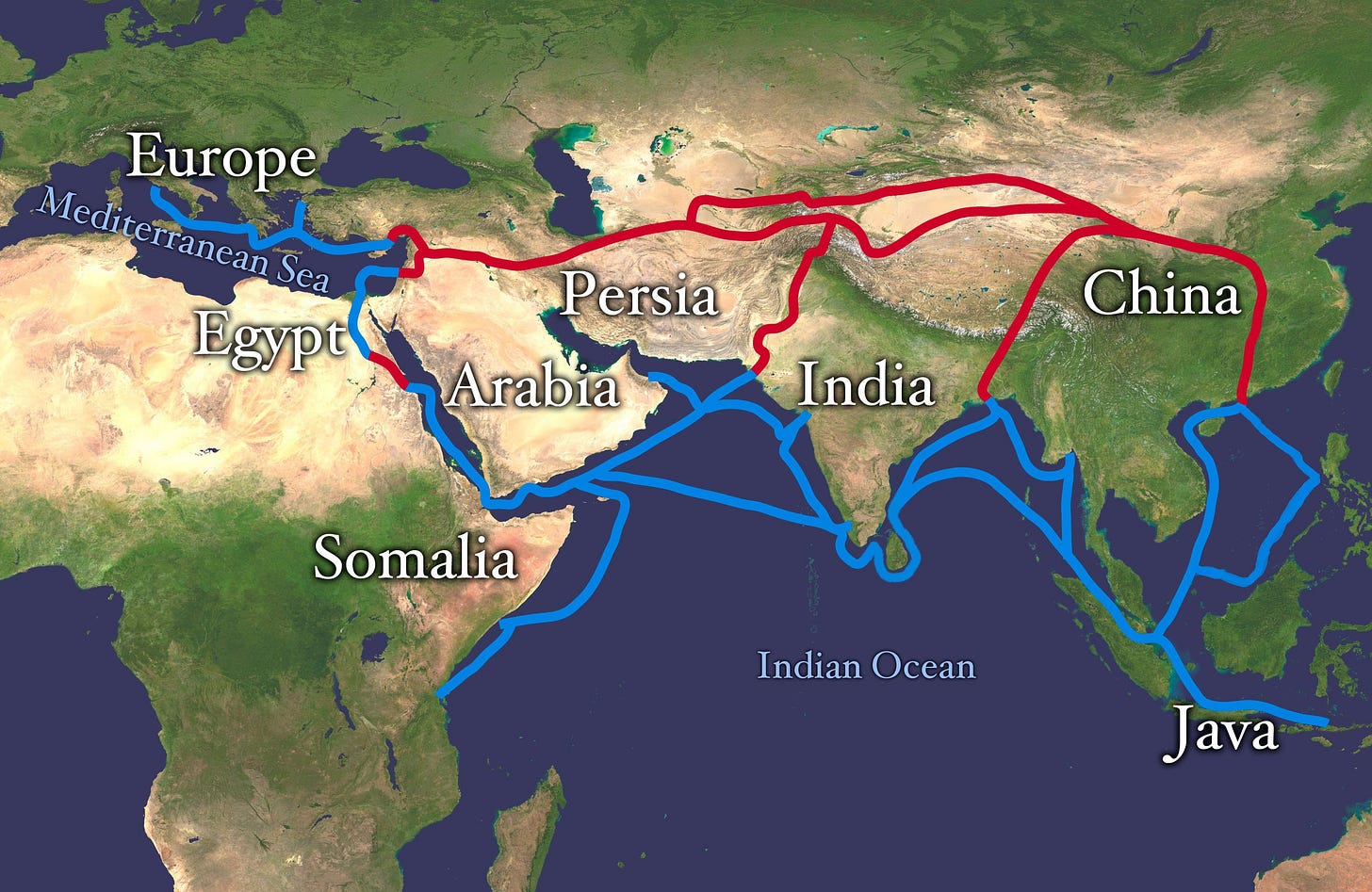The world of One Piece is a vast open world filled with different islands and landmarks to explore. And while many of the islands come from the imagination of author Eiichiro Oda, most of the places the Strawhats explore were inspired by real world locations. For decades, fans could only speculate where these locations were from, but on March 4th, 2021, Suiesha published the official One Piece Rurubu. A guide book to all the real world inspirations for all the locations in One Piece.
In this article, we will be exploring the origins of Alabasta’s real world inspiration. And while this analysis will heavily rely on the Rurubu publication, I will talk about where I think some of Alabasta takes its inspiration from. Let us begin our journey through the sandy kingdom.
Basic Information:
Alabasta is a desert island. It has the rules of a desert, reaching 100 plus degrees Fahrenheit (38°C) during the day and 25°F (-3.9°C) during the night. Dunes reach the height of mountains, oasis’s are rare, and sandstorms loom in the distance. Dangerous animals lurk under the sand and in the skies, and Baroque Works is always a step ahead of our crew.
But the desert isn’t the only location that is explored on the island. Throughout their journey on the sandy kingdom, the Strawhats visit many towns and cities, going from port to oasis to gambling town, and eventually the capital. According to the Rurubu, many of the architecture of these towns and cities were inspired by India and Egypt.
While agreeing with this assessment, I feel the Rurubu misses a larger portion of Alabasta by only targeting these two countries. In my opinion, Alabasta is also inspired by:
The Arabian Gulf (Saudi Arabia, Kuwait, Qatar, Oman)
North Africa (Tunisia, Libya, Mediterranean countries)
Middle East (Syria, Palestine, Iran)
Nanohana:
Nanohana is the first city we are introduced to in Alabasta. Nanohana’s architecture is replicated all over the desert kingdom, which makes it a great baseline for our introduction to the country and this analysis. This introduction happens in chapter 155, where Crocodile “the hero” is defeating some pirates in the market square.
There are two pieces of architecture that are heavily favored in Nanohana. Domes and minarets (towers). Both pieces of architecture can be seen all over the country, but they are heavily favored in Nanohana. Crocodile actually stands on the top of a minaret in this panel.
The Rurubu doesn’t say where Nanohana gets it’s inspiration from, but it’s easy to speculate. “Nanohana resembles a middle-eastern desert town, following the conventions of Islamic architecture.” (One Piece Wiki).
The destroyed marketplace is inspired by Arabian Bazars. The Arab world was littered by marketplaces that sold a diverse array of goods. A large reason why these bazars frequented the Arab and Islamic worlds was due to the spice trade and later the silk road.
So, Nanohana could be inspired by any Arab Bazar. The one I think it most resembles is the Jerusalem Bazar. Located in Palestine, this ancient city connected Europe to Asia and Africa for millennia. And with Nanohana being a port city, it would make sense why it looks so similar to those cities that connected the world on the silk road. This image of old Jerusalem even has the domes and minarets that cover that Nanohana skyline.
Speaking of, a dome and minaret are actually part of the same building.
A mosque is a Muslim place of worship. It is built with two specific features in mind. The minaret is a tower, built for the muaa’din (the official that proclaims the call to prayer), the tower is made high so that their voice can be heard all over the city.
Even in the Great Mosque of Qairawan, famous for its minaret, is accompanied by a dome (seen on the right in the photo below).
The dome of a mosque covers the top of the building, inlayed with beautiful geometric designs, with some people believing that the dome in a mosque represents heaven. The skeptical side of me thinks that my ancestors just wanted to show off their math skills, but to each their own.
The Blue Mosque of Istanbul is one of the most famous mosques in the whole world. It’s namesake being its blue colored domes that can be seen from the Istanbul skyline. And if we compare that to the Nanohana skyline, we get very similar images:
Nanohana seems to be an amalgamation of everything Islamic. From the minarets and domes in the skyline, to the marketplace and city streets on ground, Nanohana has major inspiration from these cities and locations.
The rest of Alabasta follows suite, however, not all of the desert kingdom is inspired by Arabian cities.
This blog post is only the first part of this analysis. This series will be released in installments over the coming months. I hope you enjoy! :)
If you want to hear more of my commentary on Islamic and Arabian Architecture, you can check out this Uncharted 3 Twitch stream I did earlier this year. I talk about how accurate Yemen is portrayed in that game here:















